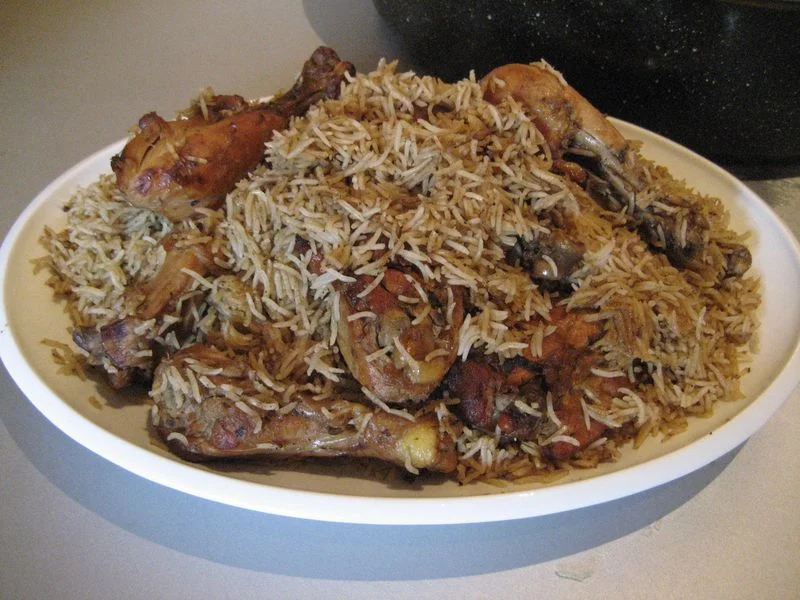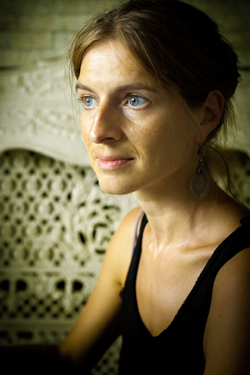By Humaira & Katie
Nothing is more important at the Afghan table than the rice. An Afghan woman’s reputation as a good cook can hinge solely on how well she prepares her rice. Indeed, the number of rice dishes served at a particular wedding and the skill with which the hostess executes her palau can be fodder for gossip amongst a group of Afghans.
Palau is serious business in Afghanistan and nobody does it better than Humaira’s mom, who is fondly known by her grandchildren as “Jeja.” No matter how well our palau may be, it’s never quite up to Jeja’s standards. Most important is not to overcook the rice. Each grain should be distinct from the next. Sticky rice just will not do in a good Afghan kitchen.
Afghan cuisine uses short grain and long grain rice. It's very important to buy the best and least processed Basmati rice. Jeja only shops in the Afghan store where she buys rice for her palau. She always has her finger on the pulse of what the latest, best rice in the market is. When I'm shopping for rice I always call her from the store to get her recommendation for the best brand name. If you don't have access to an Afghan, Indian or Iranian store,you can still make a fine pilau. We do find that many brands in American supermarkets are overprocesses and tend to break in the cooking process. This would probably horrify Jeja, but in our test we found even the broken rice quite delicious.
The recipe for Palau may look daunting but it's not difficult. We have tested it many times to simplify it and retain the flavors. There are two methods to cooking long grain rice.
Afghan Rice with Chicken
Palau e Murgh
3 cups basmati rice
5 skinless chicken legs
5 skinless chicken thighs
2 large yellow onions, peeled and quartered
½ cup olive oil or vegetable oil
5 tsp. salt
1 cup chicken broth
2 tsp. ground cumin
1 ½ tsp. ground cardamom
½ tsp. ground black pepper
12 cups water
2 tsp. browning sauce such at Kitchen Bouquet (optional)*
Instructions:
Preheat the oven to 500 degrees.
Immerse rice in a bowl of water and drain in a colander.Repeat this step 3 times.
Wash and dry the chicken. Set aside.
Chop the onions in a food processor using the pulse button. Don't puree the onions.Choose a sauté pan that is at least a couple inches deep and large enough to fit all chicken.Pour the oil in the pan and saute the onions over high heat, stirring quickly, until brown (5-10 minutes). Don't burn the onion.
Add the chicken to the pan and sprinkle with 3 tsp. of the salt. Cook the chicken over medium-high or high heat for 6 minutes, turning from time to time so all sides turn golden brown. The onion will start to caramelize and turn into a thick sauce. Add 1/4 cup of the chicken broth, and continue stirring to keep the chicken from burning. Once that liquid dries add another 1/4 cup of broth and cook until all the broth is used. This process will take around 20 minutes. Once a thick sauce has formed, bring to a boil, turn the heat to low, cover with a lid or aluminum foil and simmer for 10 minutes.Remove the chicken pieces from the broth and set aside. Stir the cumin, cardamom and black pepper into the broth. Continue to cook on low for 5 minutes to allow it to thicken.
Meanwhile, measure 12 cups of water and the remaining 2 tsp. of salt into a large dutch oven or pot with a fitted lid. Bring it to a boil. Add the rice to the water and boil until it is nearly cooked, though still slightly crunchy. This will take just a few minutes depending on the rice you use. You will have to taste it to check for doneness. Do not overcook it. Immediately strain the rice through a colander. Put the rice back into its cooking pot and add the broth. Mix well. Arrange the chicken pieces on top of the rice. Cover the pot with foil and then with a lid.
Bake the rice for 15 minutes at 500 and drop the temperature down to 250 degrees.Cook for another 20 minutes.
Arrange the chicken pieces on a large platter and cover with the rice.Serve with a simple salad and plain yogurt.
Chicken just as it was added to the browned onions in the saute pan
051
Chicken after 30 minutes of cooking with the caramalized onions, the brown color is achieved by browning the onions to the right color
055
This pan is ready to go in the oven to bake or in Dari it would be "Dam kadan"
057
Humaira's rice pot. You will find one of these in every Afghan's home in the United States.
Except where otherwise noted, all content on this blog is licensed under the Creative Commons Attribution-NonCommercial-NoDerivs 3.0 Unported license.











